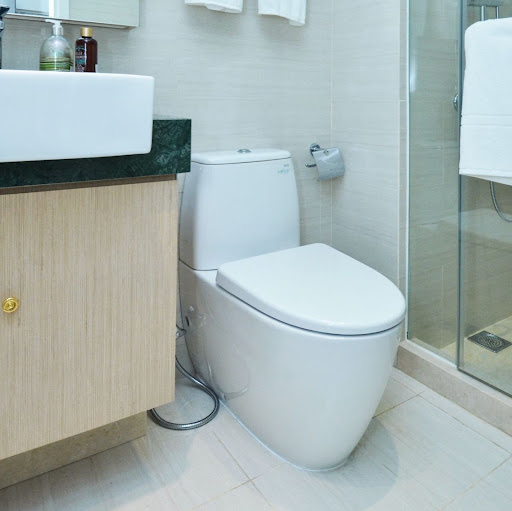For many, the New Year is a time for making resolutions and building healthier habits. The good news is that usually the habits that are most important for overall health are also the best ways to support a happy and healthy pelvis. These habits include prioritizing movement and exercise, getting adequate rest, drinking plenty of water, eating nutritious food, managing stress, and connecting with loved ones and your community.
Letting go of habits and patterns that are no longer serving us is another way to build a healthier lifestyle and a healthier pelvis. However, you might be practicing some other bowel, bladder or sexual health habits that you are not even aware are having a negative impact on pelvic health. Unfortunately many of us never receive good education on healthy habits for our pelvic floor, or have even been taught unhealthy habits throughout our lives, yikes! Read on to learn these 5 common habits that may negatively affect our pelvic health and how to let them go in the New Year.
1. Regularly Peeing “Just In Case”
Do you always pee right before you leave the house, go into a meeting, or start a workout? Many people pee before starting an activity “just in case” they have to go or to prevent leakage or having to go later while they are busy. For many of us, this habit might have started all the way back in childhood from well-meaning but misguided parents or adults who told us to empty our bladder before leaving the house. While this may seem like a good bladder strategy, it can actually have negative effects on your bladder and pelvic floor muscles. This habit can inadvertently train your bladder to start perceiving that it is normal to void even if you only have a little bit of urine, and your bladder sends messages to your brain to find a bathroom even if your bladder is not very full. Overtime, the signaling from your bladder starts to get more and more urgent and happens more and more frequently, which can lead to always feeling like you have to pee and only have small amounts come out.
How to let go of going just in case: Try to identify and decrease the number of times you go just in case, starting with the habits that are easiest to break. For example, if you always pee before getting in the car, try to only pee for trips greater than 30 minutes. If problems persist, contact N2 or your local pelvic PT.
2. Power Peeing
Have you ever been on the toilet and just want to get it over with so you forcibly try to pee harder and faster? Or maybe it feels difficult to start the flow so you effortfully have to push out pee to get it going. Power peeing is especially common if you “hover” instead of sitting down because it requires extra effort to start the stream. Sometimes this occurs just occasionally, but for others it is their go-to way to pee.
The healthy elimination of urine depends on neurological signaling that triggers the bladder muscle to contract and the urinary sphincter and pelvic floor muscles to relax. By power peeing, we are pushing (pun intended) past this normal neurological pathway and over time it can result in poor bladder strength, sensation, control and further issues with our ability to start and maintain a stream or empty fully. Furthermore, the increased pressure from pushing down can exacerbate or contribute to issues with pelvic organ prolapse.
How to let go of power peeing: sit down on the toilet and relax, trying to let the pee come on without pushing. Keep in mind that pushing pee out might only save a few seconds and if it is a regular practice it can cause issues that require a lot more time and effort to undo the effects from power peeing!
3. Trying to Fix all Pelvic Issues with Kegels
Kegels, or the voluntary contraction of our pelvic floor muscles, have often been touted as the antidote for all pelvic floor issues. However, often issues with pelvic pain, sexual dysfunction, and bowel and bladder function result from pelvic floor muscles that are overactive, or feel too tight and tender to the touch. If performing pelvic floor contractions activates and shortens the muscles, then squeezing them regularly (and especially without guidance on form) could make the muscles even tighter.
Letting go of kegeling: The first step to healing might be learning to appropriately relax and lengthen the pelvic floor muscles before you do any strengthening. Pelvic floor physical and occupational therapists are uniquely trained to assess these muscles and help you truly understand if your issues stem from a pelvic floor with muscle overactivity. Think about if you were trying to strengthen your bicep muscle with bicep curls – you would want to learn how to fully straighten your arm before curling up the weight!
4. Holding Your Breath Regularly
Many people unknowingly hold their breath throughout the day – whenever they are stressed, getting up from a chair, out of bed, or at the gym every time they do a repetition. Anatomically, holding our breath means closing the glottis (the flap at the top of the throat), and therefore closing the top of the tube going from our throat to our pelvis. With the top of the tube closed, it creates more pressure on the pelvis. Sometimes the pelvic floor muscles are strong enough to meet this pressure, and other times they are not and symptoms such as urinary leakage or worsening of an organ prolapse can occur. Even if the pelvic floor muscles can meet the increased demand, the increased pressure still has to go somewhere, and breath holding can also be related to issues such as low back pain, hemorrhoids, and hernias. It might not be a big deal if you only hold your breath occasionally (or are trained in powerlifting and know how to do so effectively), but the effects add up if your go-to strategy is to hold your breath.
How to let go of breath holding: Breathing through movements decreases the stress and pressure on your pelvic floor muscles, and the most optimal way to do so is to exhale when on the more effortful part of the movement, or to remember to “blow as you go”. For example insteading of holding your breath and hoisting yourself up from the chair, try blowing out through your mouth as you stand. A pelvic floor physical or occupational therapist can further assess your breathing patterns to optimize your pelvic floor health – reach out to N2 or your local therapist for more information.
5. Enduring Painful Sex
Sex should not be painful, even if you have had a baby recently, have undergone menopause, have prostate issues etc. Pain with intimacy may indicate tight, overactive pelvic floor muscles or irritated pelvic nerves for people with vaginas or penises. Sexual intimacy does not have to be uncomfortable, and sometimes pain with intimacy can cause our body to try to guard and protect against discomfort by tightening our muscles, causing even more pain the next time.
How to let go of painful sex: Pelvic floor physical and occupational therapists can help identify and release tight muscles, scar tissue, or irritated nerves causing pain with sexual activity. Issues with your hips, core, or low back may also be contributing, and they can perform hands on therapy and teach new ways to move to decrease strain on the pelvic floor. They can also show you ways, or refer you to other providers such as sex therapists, to decrease tension your body and pelvic floor muscles so that you can eliminate discomfort and have more fun between the sheets.
Sources:
https://www.ncbi.nlm.nih.gov/books/NBK279430/
https://www.ijmhr.org/ijpr_articles_vol2_1/IJPR-2014-601.pdf

